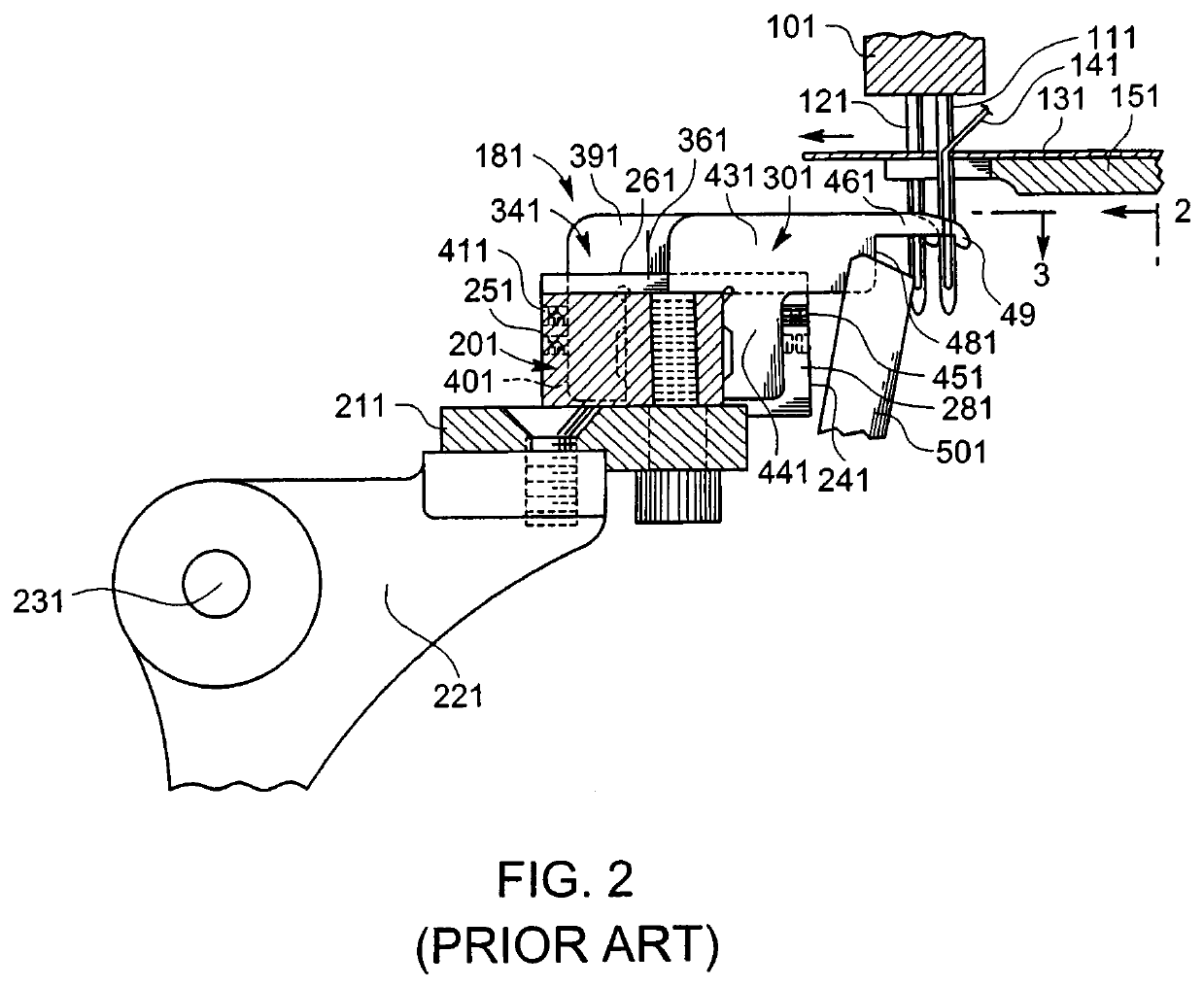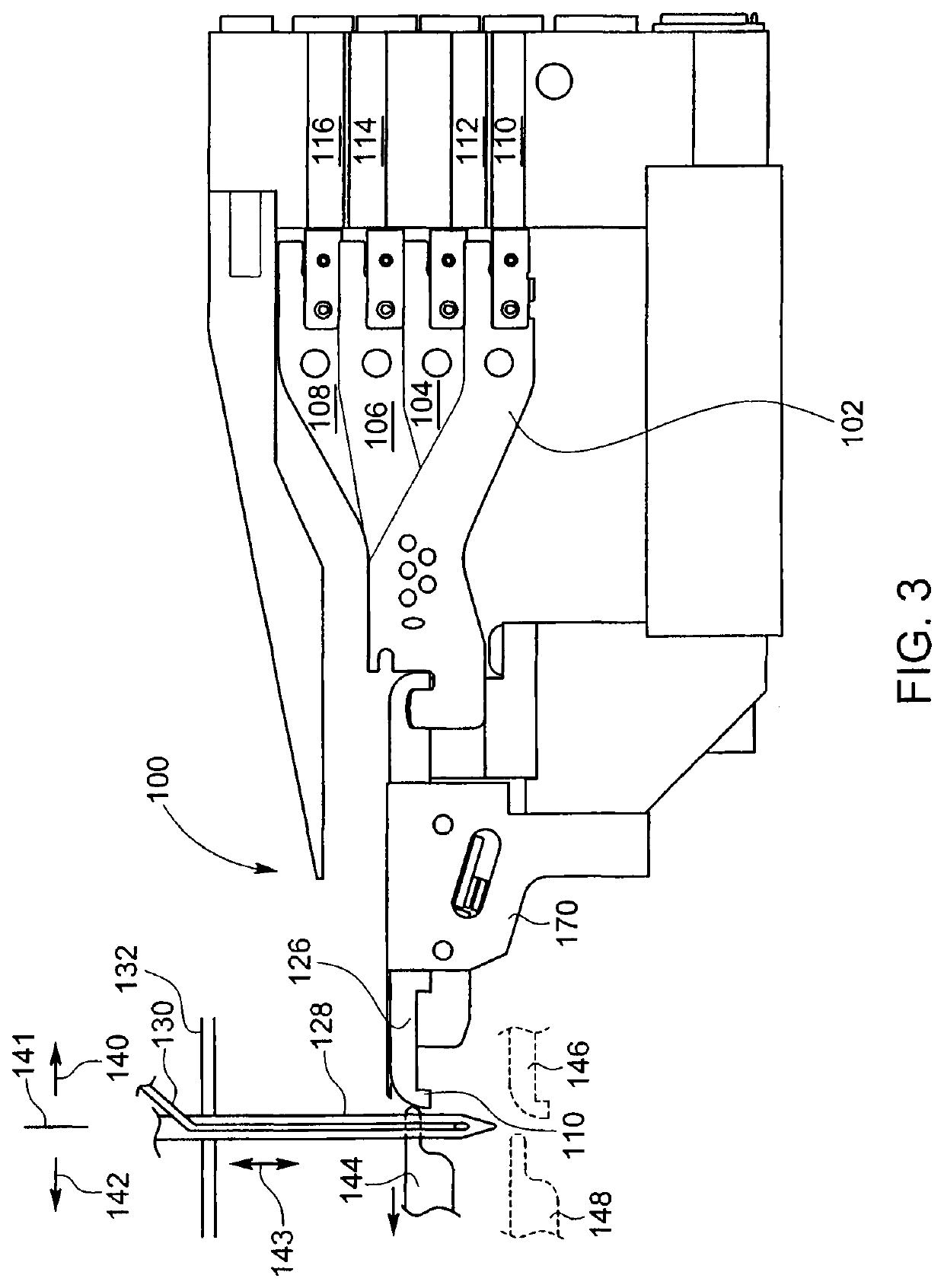Cut Pile Looper and Hook Tufting Improvement
a looper and looping technology, applied in the field of tufting machine operation, can solve the problems of insufficient face yarn for general acceptance of tufted fabric, maintenance of tufting machine, and production speed of those fabrics, so as to improve tufting machine technology, reduce the need for tacking stitches, and adequate face yarn density
- Summary
- Abstract
- Description
- Claims
- Application Information
AI Technical Summary
Benefits of technology
Problems solved by technology
Method used
Image
Examples
Embodiment Construction
[0040]Referring now to the drawings in more detail, FIG. 1 discloses a prior art tuft-forming machine in the form of a staggered needle cut pile tufting machine 10 having a multiplicity of front needles 12 and rear needles 14 mounted in a needle bar 16 reciprocally driven relative to a backing material 18 through which the needles penetrate during each cycle of the machine. Some tufting machines 10 may have a single row of needles 12 or 14 spaced apart double rows of needles 12 and 14 etc.
[0041]Backing material 18 can be fed in the direction illustrated by the arrow across the bed 20 of the tufting machine, being supported on a needle plate 22 carrying a plurality of fingers 24,26. During needle penetration, the needles 12,14 pass during penetration between respective fingers 24,26 extending from the needle plate in the direction of backing material feed. After penetration of the backing material the needles 12,14 cooperate with respective oscillating hooks 28,30 beneath the backing...
PUM
 Login to View More
Login to View More Abstract
Description
Claims
Application Information
 Login to View More
Login to View More - R&D
- Intellectual Property
- Life Sciences
- Materials
- Tech Scout
- Unparalleled Data Quality
- Higher Quality Content
- 60% Fewer Hallucinations
Browse by: Latest US Patents, China's latest patents, Technical Efficacy Thesaurus, Application Domain, Technology Topic, Popular Technical Reports.
© 2025 PatSnap. All rights reserved.Legal|Privacy policy|Modern Slavery Act Transparency Statement|Sitemap|About US| Contact US: help@patsnap.com



